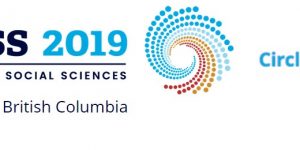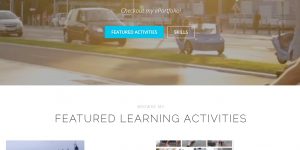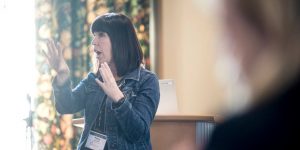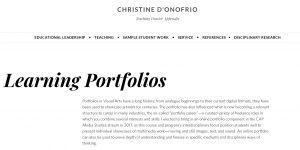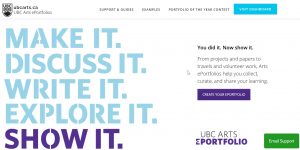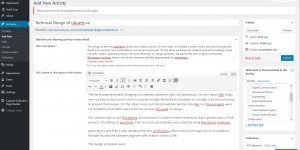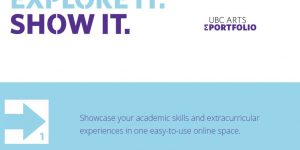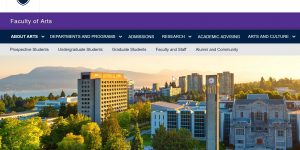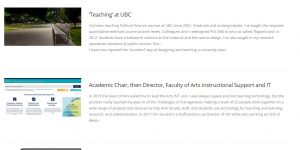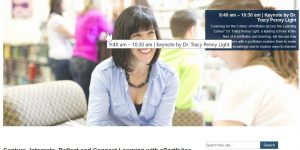1. Background: Educational and Career Outcomes for Arts: New Paradigm Project
From 2015-2108, the Faculty of Arts mounted a project called "Educational and Career Outcomes for UBC Arts Students: Towards a New Paradigm." The objective was to help students connect their academic activity to their awareness of and preparation for the transition to their career. Eportfolios were a crucial piece of the puzzle, becoming a real keystone for this project's objectives. However there were technology challenges and they were too rooted in courses. A better solution was needed.
2. Rationale for Eportfolios
At many points, the project teams have had to clearly articulate the rationale for the use of eportfolios. The benefits have been argued and researched for many years around the world, but students and faculty are generally unaware of why eportfolios can be so valuable.
3. Educational Theory - Emergent Knowledge and Skills
The UBC Arts eportfolio service references arguments in educational theory around "Emergent Knowledge" and "Folio Thinking". Eportfolios support complex and decentralized approaches to learning which are most appropriate for learning situations in which there exists more than one response to a topic. This requires creating a space and structure that allows for certain ideas to trigger other ideas and for knowledge to be discovered within this process.
4. Working with Programs for ePortfolio adoption
We worked with programs that were targeted as having curricular and professional aspects well-suited to the use of ePortfolios. These included: the Bachelor of Media Studies, the Master of Library, Archival, and Information Science, the First Nations and Indigenous Studies Program, and the Geography Department. But this strategy had both benefits and pitfalls.
5. The Limits of Curricular Integration of Eportfolios
5. Some proponents of eportfolios suggest that the goal is an eportfolio culture in terms of (program) curriculum and (faculty) course design. We see limits to growth if curricular integration is the primary strategy and objective. The obstacles are huge and the outcome may backfire in terms of students' feelings of the value of an eportfolio and their continued use of one.
6. Strategy for Student-Driven Eportfolio Service
Our goal was to build a free service that students could use immediately on arrival at UBC and take with them and use free forever. The foundation of the service design would be that students would recognize this as something that they own, build, and deploy as they wish. We intentionally divorced it from any particular program's use of the service.
7. Technical and Functional Design of ubcarts.ca
The design of the Arts eportfolio service was a balancing act. On one hand, we wanted a system with a low cost of ownership (build and maintain) and sustainable at current resource levels. On the other we knew that students wanted something simple but with modern, appealing design and some flexibility on design elements. We solved this with a highly customized Wordpress multiuser theme, with all the elements labelled appropriately for eportfolios.
8. Marketing ubcarts to Students
The effort to make students aware of the service, create, and use their eportfolios can justifiably be called marketing. It is an ongoing effort to maximize student use of the ubcarts service.
9. User Adoption
We would like to report fine-grained statistics on user adoption and use. What we have right now is users' site creation date and total number of Learning Activity posts as they accumulated over time.
How did we build this in a Faculty?
A number of factors came together to enable this to be created in a relatively small IT unit in a Faculty rather than a whole university. Indeed, these kinds of projects rarely get going at a university because of the diversity of stakeholders that must be brought on board. We had keen sponsors, two separate funding sources, visionary participants, and the right mix of roles.
The idea of Custom Collections
Collections enable students to curate and present their activities in different contexts.
CIRCLe Conference 2018
The TLEF project culminated in a conference hosted at UBC and organized by the project team. It explored ePortfolios from many perspectives. Participants discussed digital portfolio modalities, how to deploy them in programs and courses, and how to bring more faculty and programs into the fold.
